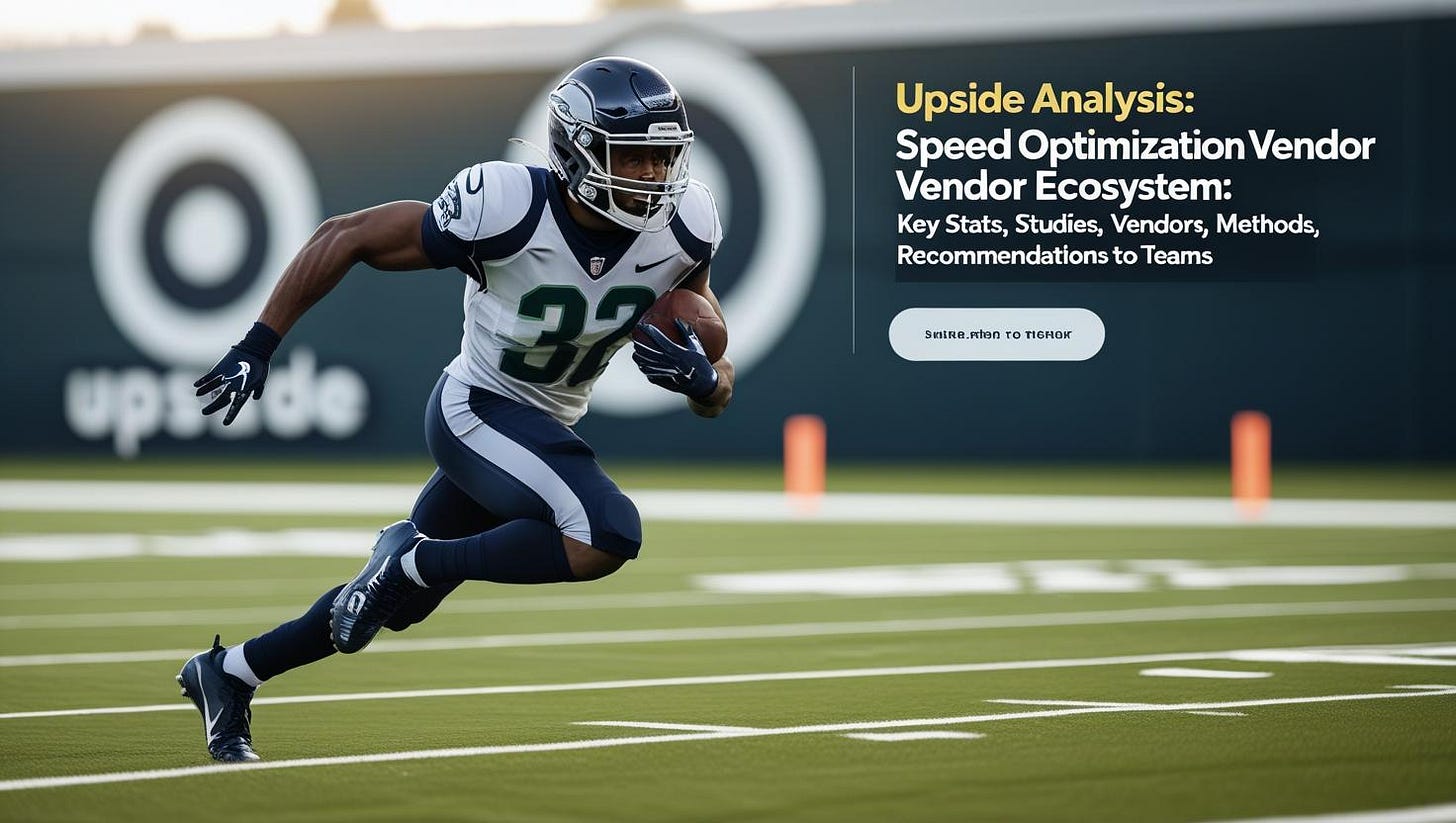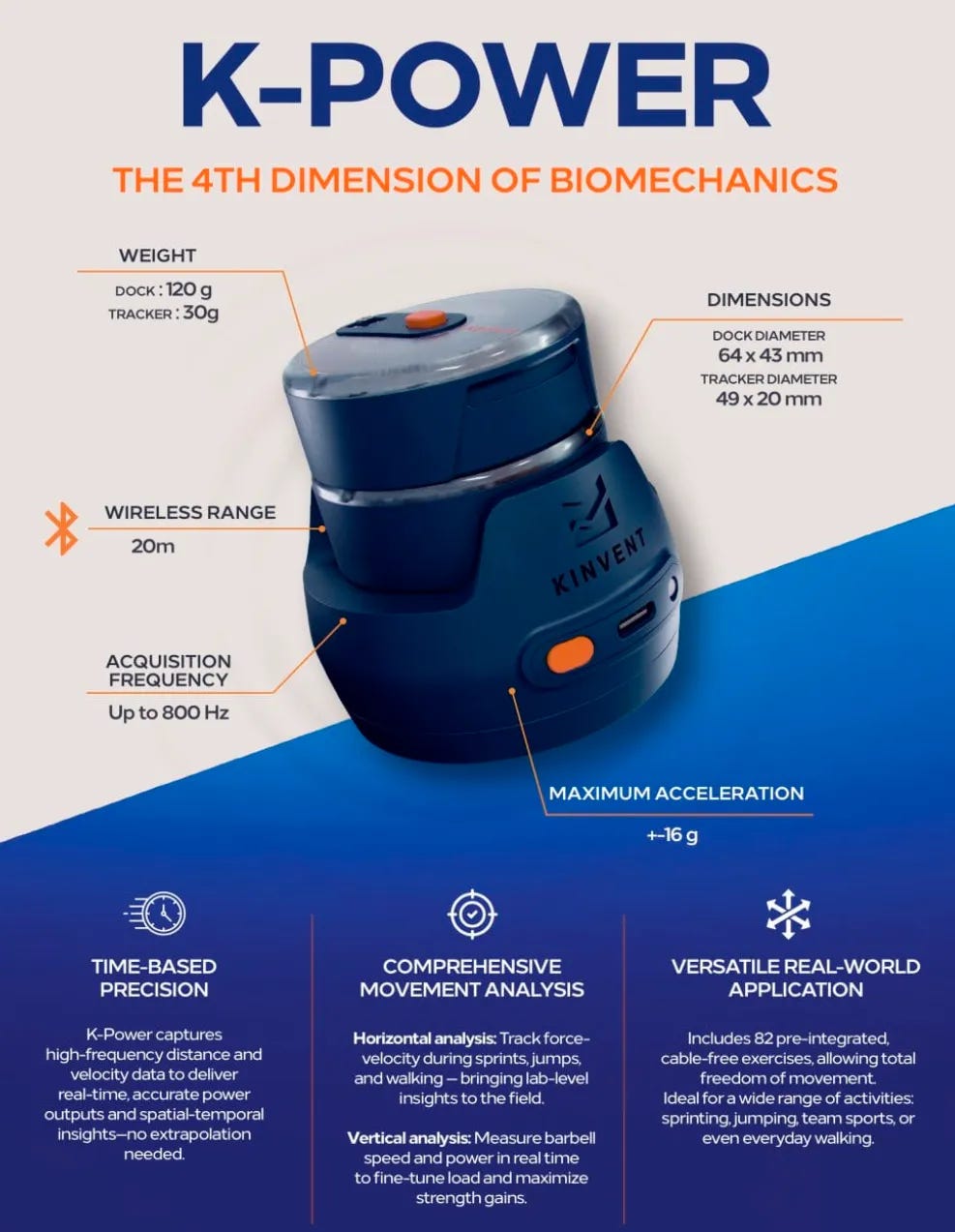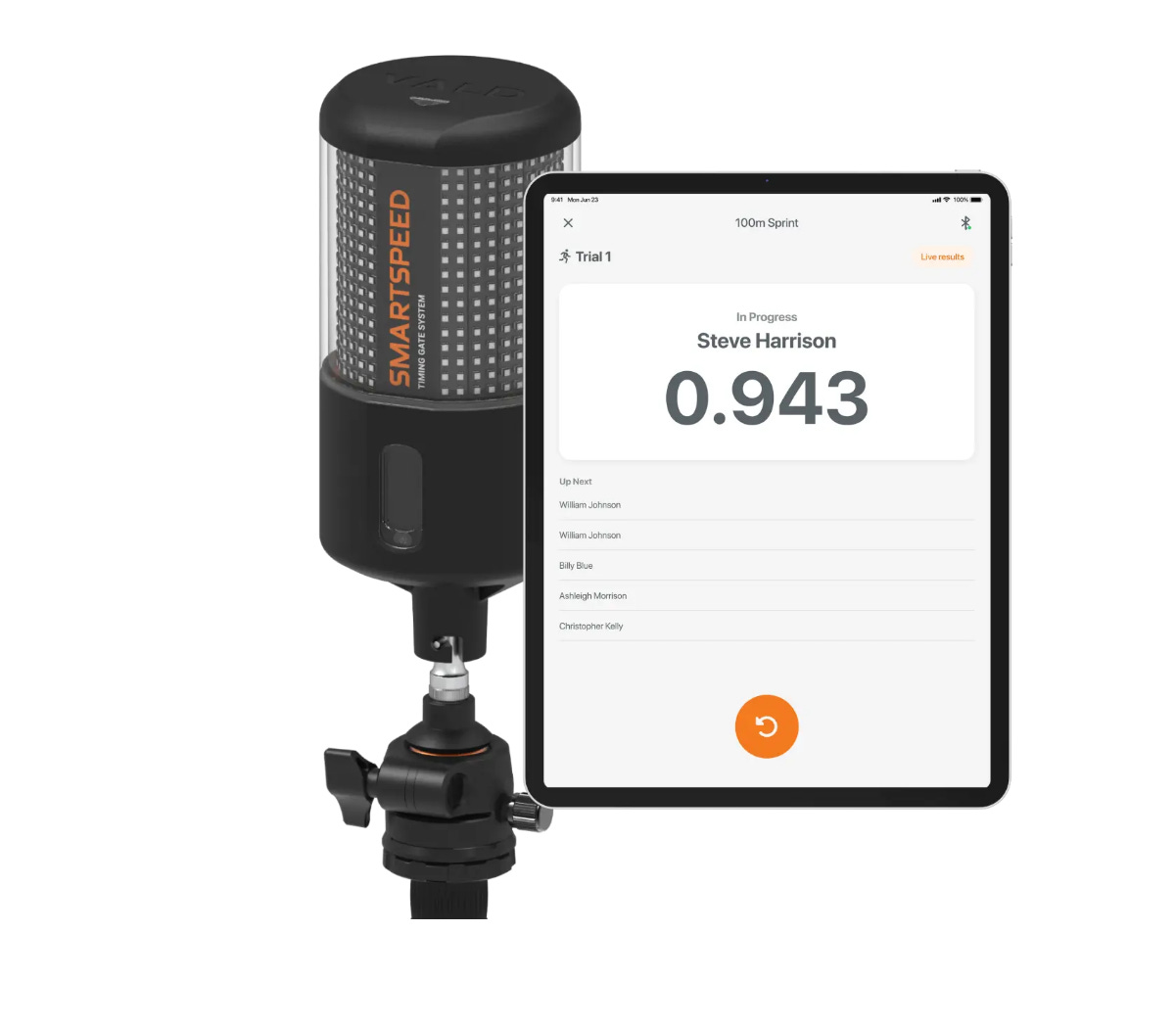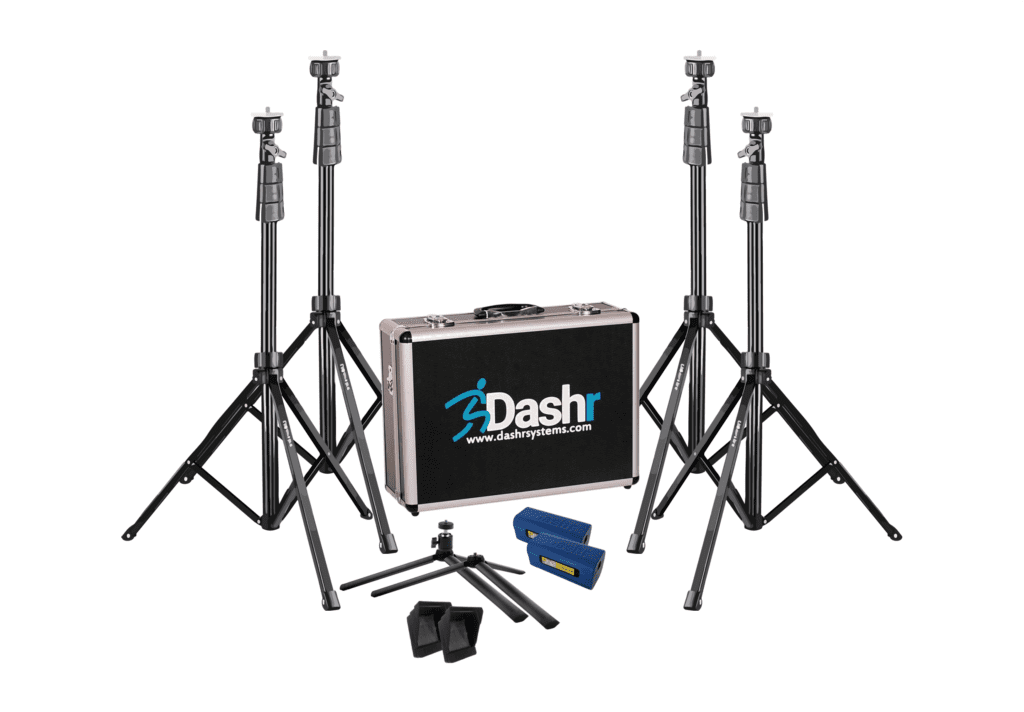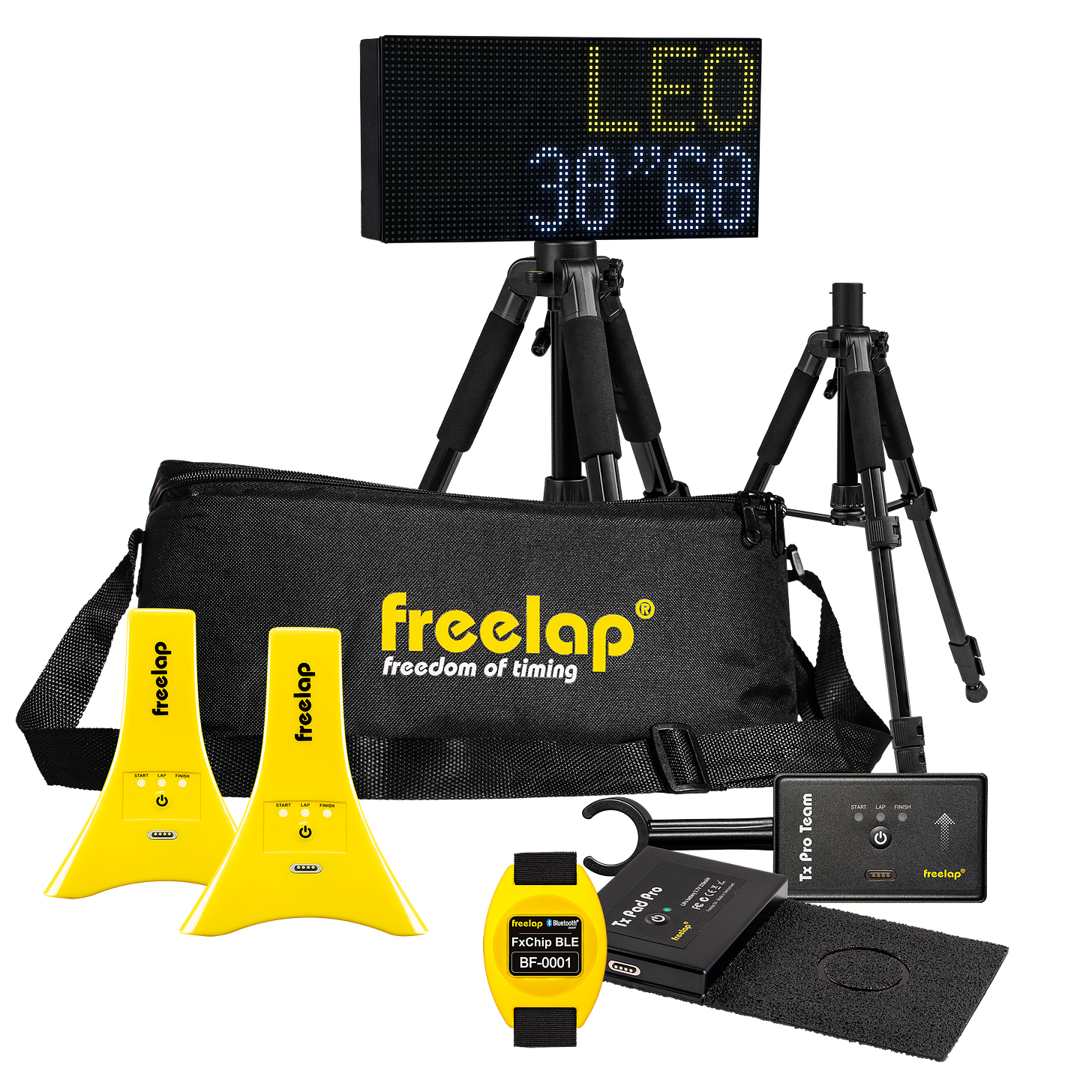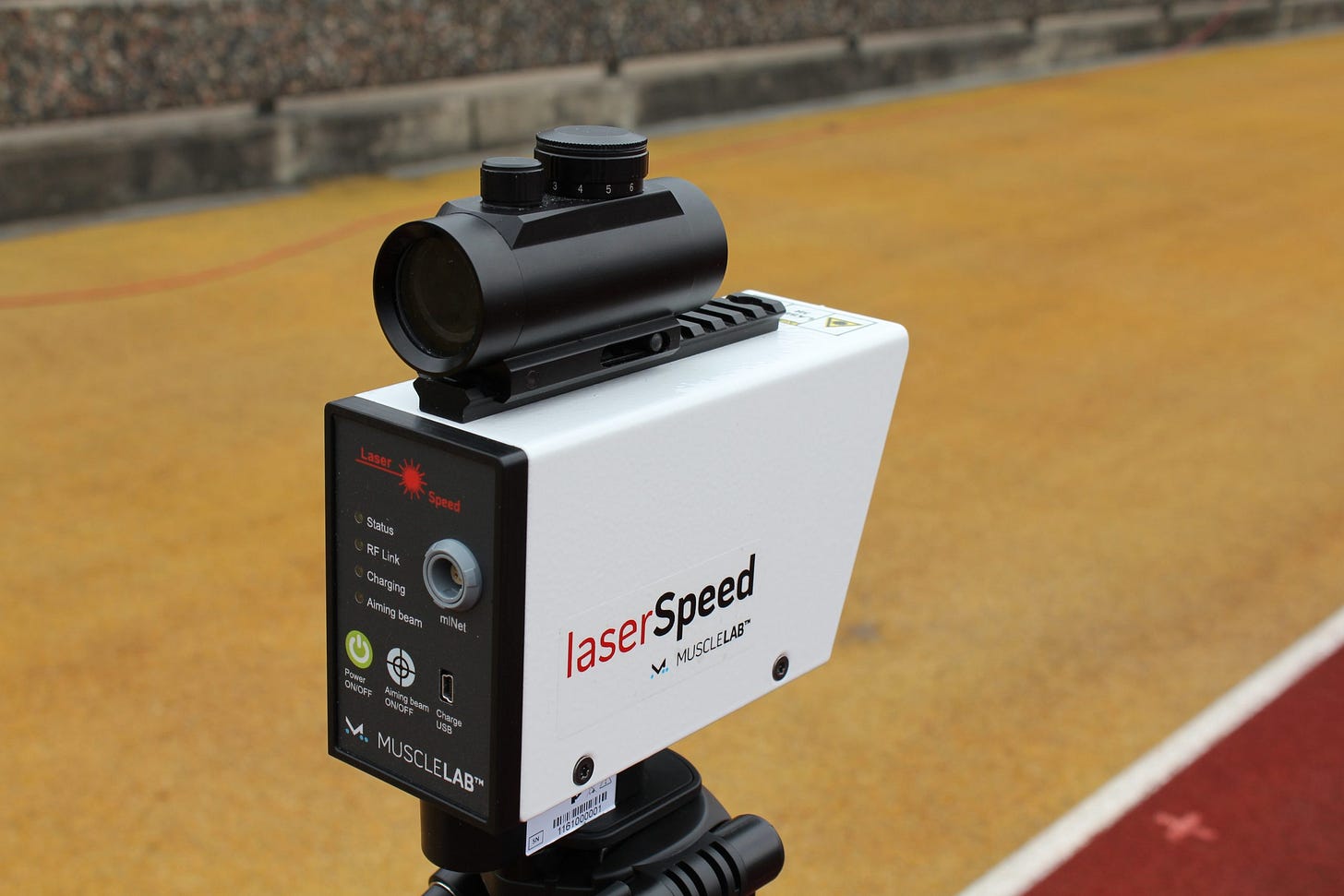📚 Upside Analysis: Speed Optimization Vendor Ecosystem: Key Stats, Studies, Vendors, Methods, Recommendations To Teams
Speed remains one of the most decisive performance variables in elite sport. Optimizing acceleration and maximal velocity (Vmax) affects transition moments, pressing, counterattacks, line breaks, and defensive recovery. At the same time, speed exposure is tightly coupled to soft-tissue risk—especially hamstring strain injuries (HSIs)—making planning and measurement non-negotiable. Recent evidence underscores both sides of the coin: sprint mechanics and exposure patterns are linked to HSI risk, yet well-planned near-max exposures appear protective.
Market size
Speed optimization sits at the intersection of three fast-growing markets:
Athletics/athlete timing systems (photocell/laser gates, radar/LiDAR speed, smart displays): estimates range from ~$1.0B–$2.3B in 2024, with projected high single-digit CAGR through 2031–33. (Methodologies and scopes vary by report; treat as directional.) (Source: Global Market StatisticsValuates Reports)
Sports analytics software/services powering speed KPIs, profiling, and return-to-play dashboards: $4.5B in 2024, 20–27% CAGR to 2030. (Source: Grand View Research)
Sports technology (hardware + software spanning wearables, vision, smart venues): $17–27B in 2024, ~20–23% CAGR to 2030–32. (Source: Grand View Research)
Key stats
HSI burden & recurrence: HSIs remain among the most common time-loss injuries in high-speed running sports, with 12–31% recurrence reported across reviews. Recent Premier League coverage also highlights growing HSI share and longer absences. (Source: Science Direct: The Guardian)
Protective effect of near-max exposures: A single weekly exposure >95% MSS is associated with lower match HSI risk; multi-league data across 19 elite teams relate exposure timing to match injury risk across different turnarounds. (Source: PMC+1)
Resisted sprint training (RST) for acceleration: Multiple reviews report meaningful 0–10 m improvements versus unresisted running programs of similar volume, while effects on 20 m and Vmax are smaller/inconclusive. (Source: PubMed)
Timing accuracy matters: Dual-beam gates reduce early triggers from limbs versus single-beam; newer single-beam systems deploy error correction to mitigate false trips.
Key studies
Microdosing sprint distribution (Sensors, 2023): 6-week RCT in pro field hockey—micro-distributed sprint loading improved 10 m and speed outcomes similarly to traditional distribution, with practical benefits for congested calendars. (Source: PubMed
Micro-plyometric dosing (2024): Micro-PJT and regular PJT both enhanced jump and 10 m sprint; supports small, frequent exposures in in-season contexts. (Source: PMC)
Resisted/assisted sprinting—longitudinal review (2024): Strongest gains in acceleration (0–10 m) from resisted sprinting; less consistent at max velocity. (Source: Springer Open)
Max-velocity exposure & injury risk: Weekly >95% MSS exposures associate with reduced injuries; other work explores how many near-max efforts erode hamstring strength, guiding dose ceilings. (Source: PMCD space)
Micro-doses approach for speed optimization & implementation in elite settings
Principle: Replace one large, fatiguing “speed day” with small, high-quality exposures (2–4 sets × 1–2 reps) embedded across the microcycle—keeping intensity high (≥90–95% of current MSS) while managing neuromuscular and tendon load.
Baseline microcycle (single-match week):
MD-4: Acceleration micro-dose (e.g., 3×20 m from varied starts; 2–3 min recovery).
MD-3: Plyometric micro-dose (low contacts; stiffness emphasis) + 2× fly-in 20 m at 90–93% Vmax.
MD-2: Resisted sprints (light-to-moderate load; keep velocity decrement ≤10–12%) for force-dominant athletes; or 2× fly 20–30 m at 93–95% for velocity-dominant athletes. (Source: Simpli Faster PMC)
MD-1: Optional one single 10–15 m build with a fast but submaximal stride to prime rhythm (skip if player reports residual tightness).
Two-match week (≤72 h turnarounds):
Keep acceleration micro-dose on the longer side of the week (MD-4/-5 relative to the tougher match).
Shift Vmax exposure to very short flys (10–15 m) or curved runs at ~90–92%, 1–2 reps only, to maintain coordination without fatigue.
For players below weekly >95% exposure, consider a single 20 m fly at ~95% only if RPET, wellness, and posterior-chain screens are green. PMC
Dose & progression guardrails
Weekly near-max exposure: At least 1 exposure >95% MSS when feasible; avoid collecting 7–8 efforts >90% in a single week if hamstring strength is trending down. (Source: PMCD space)
Resisted loads: Use profiling (force–velocity or %velocity decrement) to individualize; keep velocity loss ≤10–12% for quality, escalate conservatively across blocks. (Source: Simpli Faster PMC)
Drill library: Accel (falling starts, band-assists for rhythm), max-vel (fly-in 10–30 m), RST (sled/1080), curved sprints, wicket runs (low contact counts).
Monitoring & readiness
Session RPE, posterior-chain soreness scales, and countermovement jump for neuromuscular freshness.
Timing gates for 10 m, 30 m, and fly 10–20 m (best/mean), weekly %MSS achieved, and accel index (0–5 m split).
Red flags: 1–2% drop in fly 10 m with normal RPE, asymmetry in RSI/stiffness, or sprint mechanics drift → reduce exposure, add hamstring Ecc-ISO work, and re-test mechanics. (Source: British Journal of Sports Medicine)
Key vendors (timing & sprint tools)—comparison snapshot
Pricing is indicative from public sources and varies by bundles/regions. Use vendor quotes for procurement.
Source: Upside Global, confidential, August 2025
Vendor Information
KINVENT K POWER
Kinvent is a company that is revolutionizing rehabilitation and sports biomechanics with a range of connected sensors. Their K-Power device, along with other products, provides objective data and real-time biofeedback to help healthcare and sports professionals track progress and personalize training.
Here is the interview we conducted with Kinvent CEO Athan Kollias to discuss the K-Power:
🔥Upside Chat: Athanase Kollias, CEO of KINVENT, a Leading Sports and Rehab Professional Assessments Company, on Their Latest Products (3D Deltas, K-Power)
This week we had the honor to interview Athanase Kollias, CEO of KINVENT, a company that helps sports and rehab professionals assess progress and build engagement and motivation.
Swift Performance G4
Swift Performance is a company that creates athlete performance measurement products, including timing gates, force sleds, and vertical jump analysis tools. Their G4 timing gates are a popular product, featuring the SwiftAir radio communication system for long-range and stable connectivity.
VALD SmartSpeed
VALD is a global company that provides a comprehensive suite of human measurement technologies for health and performance professionals. Their solutions are used by elite sports teams, physical therapy clinics, and military organizations to objectively measure and monitor athletic and patient data.
Dasher
Dasher is a company that specializes in providing affordable and accessible electronic timing systems for athletic performance testing. Their systems are controlled by a user-friendly app, making them a popular choice for high schools, colleges, and combines looking to streamline their evaluation process.
Freelap
Freelap is known for its magnetic field timing systems that offer a highly portable and efficient solution for speed training. Their unique technology allows multiple athletes to be timed simultaneously on a variety of drills, making it a versatile tool for coaches and athletes across many sports.
Brower
TCi Brower Timing Systems is a leading provider of wireless timing solutions, trusted by athletes and coaches worldwide. The company is known for its durable, reliable, and highly accurate timing systems for various applications, including skiing and sprint training.
MuscleLab (Ergotest)
MuscleLab is a comprehensive athlete assessment system developed by Ergotest Innovation AS, a company with over 30 years of experience in creating test and training tools. The system integrates various sensors like force plates, timing gates, and IMUs to provide detailed, synchronized data for performance analysis.
1080 Sprint
1080 Motion is the company behind the 1080 Sprint, a robotic resistance training and testing device. It is considered a gold standard for resisted sprint profiling and programming, using a motorized cable to provide intelligent variable resistance while accurately measuring force, velocity, and power.
Here is the interview we conducted with Anna-Carin Månsson, CEO, and Ola Eriksrud, co-Founder of 1080 Motion:
🔥Upside Chat: Upside Chat with Anna-Carin Månsson, CEO, and Ola Eriksrud, co-Founder, 1080 Motion, A Leading Professional Grade Digital Motorized Strengths Training Company.
This week, we have the honor to interview Anna-Carin Månsson and Ola Eriksrud. Anna Carin is the CEO of 1080 Motion, recognized as the world leader in professional grade digital motorized strength training equipment.
How technologies enable better data leverage
Timing gates provide objective splits (0–5–10–20–30 m) and fly segments to separate acceleration vs. max-vel qualities; dual-beam/ECP mitigate false triggers from limbs for tighter week-to-week signal. (Source: Research Gatesupport.vald.com)
Resisted sprint systems (e.g., 1080 Sprint) quantify force–velocity profiles and allow velocity-loss governance, individualizing sled loads by decrement instead of fixed kg. (Source: Simpli Faster)
Integrated ecosystems (Kinvent, VALD, MuscleLab) align sprint splits with neuromuscular status (jump metrics, stiffness), increasing confidence when green-lighting >95% exposures.
Implementation playbooks (practical detail)
A. “Foundation 6-week” in-season block (single match)
Weeks 1–2: 2×/wk micro-dose—Accel (3×20 m), Vmax primer (2× fly-in 20 m @ 90–92%); RST once/wk light (≤10% v-loss).
Weeks 3–4: Maintain 2× micro-dose; advance fly distance to 25–30 m; RST moderate (≤12% v-loss).
Weeks 5–6: Keep volume steady; add a single >95% MSS exposure on MD-3; RST toggled by F-v profile (strength-leaning athletes get velocity emphasis and vice-versa). (Source: MDPI Springer Open)
B. Two-match week “maintenance”
1 short accel micro-dose (MD-4 or earliest slot), 1 very short fly (10–15 m at ~90–92%).
Players below >95% exposure for ≥2 weeks: insert one controlled 20 m fly at 95% on the longer turnaround—only if monitoring greenlights. (Source: PMC)
C. Return-to-play (late stage)
Build >85% → >90% → >95% MSS exposures over 2–3 weeks; ensure mechanics quality (video/IMUs), add curved and change-of-direction variants, and maintain posterior-chain strength. (Source: PMC)
Risk & quality controls
Accuracy first: Prefer dual-beam or validated single-beam with error-correction; standardize beam height and trial runs.
Contextual fatigue: Schedule testing away from heaviest team loads; use standardized warm-ups and a 50% familiarization run before max efforts.
Dose ceilings: Watch for excess near-max exposures eroding hamstring strength; monitor weekly counts >90% MSS. (Source: Dspace)
Future of speed optimization
Context-aware dosing: Algorithms will schedule micro-exposures automatically from training, travel, and wellness data.
Vision + IMU sprint kinematics: Low-marker setups to flag mechanical risk signatures linked to future HSIs. (Source: British Journal of Sports Medicine)
Real-time velocity-loss control for resisted sprints (device-enforced limits), and personalized F-v targets by position/role. (Source: Simpli Faster)
Low-cost ecosystems: Partnerships like Dashr × Hudl hint at integrated timing + video + recruiting workflows across pathway systems (academy/college). (Source: Sports Business Journal+1)
Recommendations to teams
Adopt a micro-dose framework: Plan 2–3 short exposures/week with one >95% MSS when feasible. Track number of >90% and >95% efforts. (Source: PMC)
Split the quality: Use 0–10 m for acceleration and fly 10–20/30 for Vmax; report both to athletes weekly.
Individualize with profiling: Use F-v or velocity-loss criteria for RST; keep v-loss ≤10–12% for in-season quality. (Source: SimpliFaster)
Buy once, buy right: If working with large squads and combines, consider Dashr/Freelap for cost and throughput; for elite profiling and resisted work, budget for 1080 Sprint; for integrated monitoring, evaluate Kinvent / VALD/MuscleLab stacks.
Codify quality controls: Dual-beam (or validated ECP), standard beam height, practice run, and a shared SOP for setup and data entry.
Protect hamstrings: Respect turnaround-specific exposure timing; if weekly >95% wasn’t achieved in training, seek a minimal dose on the longer turnaround—only with green flags. (Source: PMC)
Report what matters: A one-page weekly dashboard—0–10 m, fly 10, best/mean, %MSS, #>90%/#>95%, and subjective tightness—beats data sprawl.
Conclusion
The playbook for speed in elite sport is shifting from sporadic “speed days” to micro-dosed, high-quality exposures—measured with reliable timing, individualized with resisted sprint profiling, and scheduled with injury risk in mind. The evidence base supports at least one weekly >95% exposure when feasible, resisted work for acceleration, and rigorous measurement standards to make small gains visible and sustainable. Teams that standardize measurement, dosing, and readiness checks—and align tech stacks to those aims—can improve both performance outputs and availability across congested calendars.
You may also like:
🔥Upside Chat: Upside Chat with Anna-Carin Månsson, CEO, and Ola Eriksrud, co-Founder, 1080 Motion, A Leading Professional Grade Digital Motorized Strengths Training Company.
This week, we have the honor to interview Anna-Carin Månsson and Ola Eriksrud. Anna Carin is the CEO of 1080 Motion, recognized as the world leader in professional grade digital motorized strength training equipment.
🔥Upside Chat: Athanase Kollias, CEO of KINVENT, a Leading Sports and Rehab Professional Assessments Company, on Their Latest Products (3D Deltas, K-Power)
This week we had the honor to interview Athanase Kollias, CEO of KINVENT, a company that helps sports and rehab professionals assess progress and build engagement and motivation.

